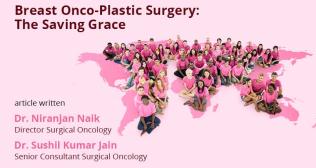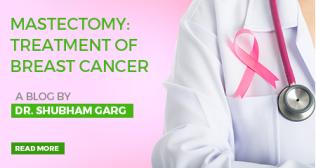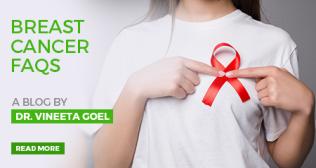
World Cancer Day 2025: Celebrating Awareness – Date, History and Significance
Cancer is the most prevalent condition that affects millions of mankind across the globe. According
to the study, it is estimated that 13.2 million new cancer cases will occur in 2030. It becomes
necessary to prevent cancer by enhancing lifestyle choices, regular testing for high-risk individuals
and promoting vaccination. In alignment with this, 4 th February is marked as World Cancer Day,
which is a global initiative by the Union for International Cancer Control (UICC). This day aims to
raise awareness about cancer and promote its prevention, detection and treatment to reduce the
global cancer burden.
History
World Cancer Day is named after the World Cancer Summit Against Cancer, which was held at New
Millennium in Paris. The Charter of Paris against Cancer signed this summit, which is aimed to
promote research, prevent cancer and improve patient services to make progressive steps to fight
against cancer. Since then, World Cancer Day has grown into one of the most significant health
awareness days worldwide.
Understanding cancer
Cancer is manifested when normal cells in the body undergo changes and start to grow
uncontrollably, creating tumours. This is the common mechanism for the majority of cancers (except
the blood cancer leukaemia). Cancer, if not treated, can invade adjacent tissues or metastasize to
other sites throughout the body via the blood and lymphatic systems. This spread can also interfere
with the digestive, nervous and circulatory systems or release hormones that modify how the body
functions.
Tumours are classified into three types: Benign, malignant and premalignant. Benign tumours are
non-cancerous, grow slowly and do not spread to other areas of the body. Malignant tumours grow
rapidly, can metastasize (spread to distant parts of the body) and can invade surrounding tissue.
Premalignant tumours are not cancerous but have the potential to become malignant.
Types of cancer
According to the type of cell origin, cancer is grouped into five main types. These are:
- Carcinoma: Originates in the skin or in tissues that line or cover internal organs
- Sarcoma: Develops in the connective or supportive tissues such as bone, cartilage, fat,
muscle or blood vessels - Leukaemia: Starts in the tissues that produce blood cells, such as the bone marrow
- Lymphoma and myeloma: Arises in the cells of the immune system
- Brain and spinal cord cancers: Known as central nervous system cancers, these begin in the
cells of the brain or spinal cord
Common cancer types
- Breast cancer: Breast cancer originates in the breast cell lining, typically in the ducts or
lobules. It is the most common cancer among women worldwide. Symptoms of breast
cancer include a lump in the breast, changes in the breast shape, dimpling of the skin and
nipple discharge. - Lung cancer: Lung cancer is caused by cell damage in the airways that multiply abnormally,
resulting in a tumour. Symptoms often include a persistent cough, coughing up blood,
shortness of breath and chest pain. - Skin cancer: Skin cancer occurs when abnormal cells in the epidermis grow uncontrollably
due to unrepaired DNA damage. This damage triggers mutations, causing the skin cells to
multiply rapidly from malignant tumours. - Prostate cancer: Prostate cancer starts in the prostate gland, which is part of the male
reproductive system. It is one of the most common cancers in men. Symptoms may include
difficulty urinating, blood in the urine and pelvic discomfort. - Colorectal cancer: Colorectal cancer affects the colon or rectum and is often referred to as
bowel cancer. Symptoms can include changes in bowel habits, blood in the stool, abdominal
pain and unexplained weight loss. - Bladder cancer: Common symptoms include pain during urination, blood in the urine and
frequent urination. - Leukaemia: Leukemia is a cancer of the blood-forming tissues, including the bone marrow. It
results in the synthesis of abnormal white blood cells. Symptoms may include fatigue,
frequent infections and easy bruising or bleeding. - Liver cancer: It develops in the liver cells. Symptoms can include weight loss, loss of appetite,
upper abdominal pain and jaundice. - Endometrial cancer: It emerges in the uterine lining. It is the most common type of uterine
cancer and is characterised by abnormal pelvic pain, weight loss and vaginal bleeding. - Thyroid cancer: Thyroid cancer begins in the thyroid gland, located at the base of the neck.
Symptoms can include a lump in the neck, changes in voice and difficulty swallowing.
Risk factors for cancer
Risk factors for cancer include tobacco use, excessive alcohol consumption, poor diet, lack of
exercise, family history or genetics and environmental factors such as pollution and car exhaust.
Chronic diseases such as ulcerative colitis and chronic obstructive pulmonary disease can increase
the likelihood of developing cancer, posing a significant challenge for low and middle-income
countries.
Significance of World Cancer Day
The significance of World Cancer Day lies in its ability to unite people from all walks of life in the
fight against cancer. In 2020, over ten million people worldwide lost their lives to cancer, making it
the leading cause of death globally. In India alone, there were an estimated 1.9 to 2 million cases in
2022.
Low survival rates of cancer are estimated in low and middle-income countries due to several
factors. These include inadequate healthcare infrastructure, late diagnosis and high treatment costs.
Even in developed countries, a lack of awareness can delay diagnosis.
Moreover, a study from four Indian cities found that the majority of cancer patients sought
treatment predominantly during the advanced stages of their disease. Furthermore, literacy and
economic status are recommended to play a significant role in enhancing cancer awareness.
World Cancer Day is the day to raise awareness about cancer, its prevention and early detection.
The day emphasises the ongoing challenges in accessing cancer care and treatment and the
importance of addressing disparities in these resources based on geography and socioeconomic
status.
World Cancer Day – Key objectives
- Inspiring the masses to follow regular screening and health checks for early detection as
many types of cancer are treatable and have better outcomes if detected in the early stage. - Increasing awareness of cancer, especially in rural areas, for people to understand the
illness
The need to bridge the knowledge gaps of cancer screening, prevention and treatment is acutely
felt as the crisis of cancer in low and middle-income countries is compounded by low literacy. On this World Cancer Day, let us learn more about the importance of early detection and help spread awareness and effective treatment in the fight against cancer.



















